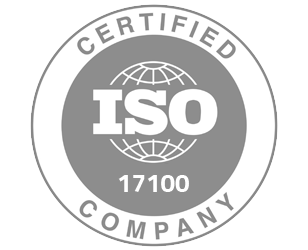
What Makes Turkish Translation Challenging
Translating Turkish involves complexities that may not be immediately obvious, stemming from its unique linguistic attributes and cultural considerations. This blog will detail the primary challenges in translating Turkish, including its agglutinative structure, vowel harmony, and the significance of syntactic order. Additionally, we'll examine the vital importance of cultural knowledge in achieving translations that are not only precise but also effectively engage the intended audience.
Cultural Context
Understanding the cultural context is essential for accurately translating Turkish, as the language is intertwined with Turkey's customs, traditions, and social nuances. It is rich with idiomatic expressions, proverbs, and phrases that are deeply rooted in the culture and history of Turkey. These elements often carry meanings that don’t have direct equivalents in other languages, making literal translations insufficient and sometimes misleading. For example, Turkish formality and levels of politeness are encoded in verb forms and usage, which vary significantly from English and must be carefully adjusted to maintain the intended respect or intimacy. Recognizing these nuances and integrating them into translations ensures that the final text resonates correctly with the audience, preserving the original’s tone, humor, and emotional impact. This cultural sensitivity is important for effective communication and helps avoid misunderstandings that could arise from cultural differences.
The Challenge of Non-Literal Translation
Turkish often employs figurative and expressive language that does not have direct equivalents in other languages. For example, the phrase "Pabucu dama atıldı," literally meaning "his shoe was thrown onto the roof," is used to indicate that someone has been replaced or is no longer favored. A literal translation would leave English speakers confused about the actual meaning. The translator must convey the intended sense of displacement or losing importance, which could be adapted to something like "he was cast aside" or "he’s been replaced" in English. This requires the translator to go beyond literal translation, capturing the underlying intent and emotional context of the original text. Successfully navigating non-literal translation demands creativity, cultural awareness, and a strong grasp of both languages to ensure the message remains effective and authentic in the target language.
Syntactical Challenges
One of the major difficulties in translating Turkish lies in its sentence structure, which follows a Subject-Object-Verb (SOV) order. This is quite different from the Subject-Verb-Object (SVO) structure used in English and many other languages. This difference in syntax often makes it challenging to maintain coherence and a natural flow when translating between Turkish and languages with a different structure. For example, a direct translation of a Turkish sentence into English may feel awkward or unclear, requiring a more thoughtful rearrangement to ensure the meaning is correctly conveyed without losing its original essence.
Consider this sentence in Turkish: "Ali okula gitti" (literally: "Ali school to went"). In English, this would need to be rearranged to "Ali went to school" for it to be grammatically correct. These syntactical differences demand careful attention to ensure translations are both accurate and fluent, without compromising the original meaning.
Technical Challenges
Translating technical and legal documents from Turkish into other languages, and vice versa presents its own set of challenges. Turkish uses specialized terminology in these fields, and the agglutinative nature of the language can make certain technical terms or legal phrases lengthy and complex. For example, a single word in Turkish might require several words in English to express the same concept, and vice versa. In legal translations, precision is critical, as any slight mistranslation could alter the meaning of a contract or document, potentially leading to serious consequences. Moreover, technical documents often include industry-specific jargon that requires expertise to translate accurately.
Best Practices for Addressing Turkish Translation Complexities
- Linguistic and Cultural Immersion: Gaining a profound understanding of the context, idioms, and cultural subtleties is fundamental. Continual exposure to the language through diverse media and interactions can deepen this knowledge.
- Engagement of Native Speakers: Employing native Turkish speakers for translation or review ensures linguistic accuracy and cultural relevance, especially important in contexts with nuanced requirements.
- Utilization of Specialized Tools: Employing advanced translation tools and resources, such as customized glossaries and detailed style guides, helps maintain consistency and accuracy across translations, especially in technical fields.
- Regular Training and Development: Providing ongoing training for translators to keep up with the latest linguistic developments and industry-specific terminology is essential for managing complex translations.
- Feedback Mechanisms: Implementing robust feedback mechanisms where clients and native speakers can provide insights on the translations can help translators understand the effectiveness of their work and make necessary adjustments.
- Ethical Translation Practices: Adhering to ethical translation practices, including transparency about translator qualifications and maintaining the original message's integrity, builds trust with clients and preserves the quality of the translation.
Turkish translation poses unique challenges due to the language's complexity and the importance of cultural context. To ensure high-quality, accurate translations, it is essential to combine linguistic expertise with cultural awareness. Utilizing native speakers, advanced translation tools and continuous professional growth are key practices that enable translators to produce precise, culturally relevant translations that effectively communicate the intended message.







